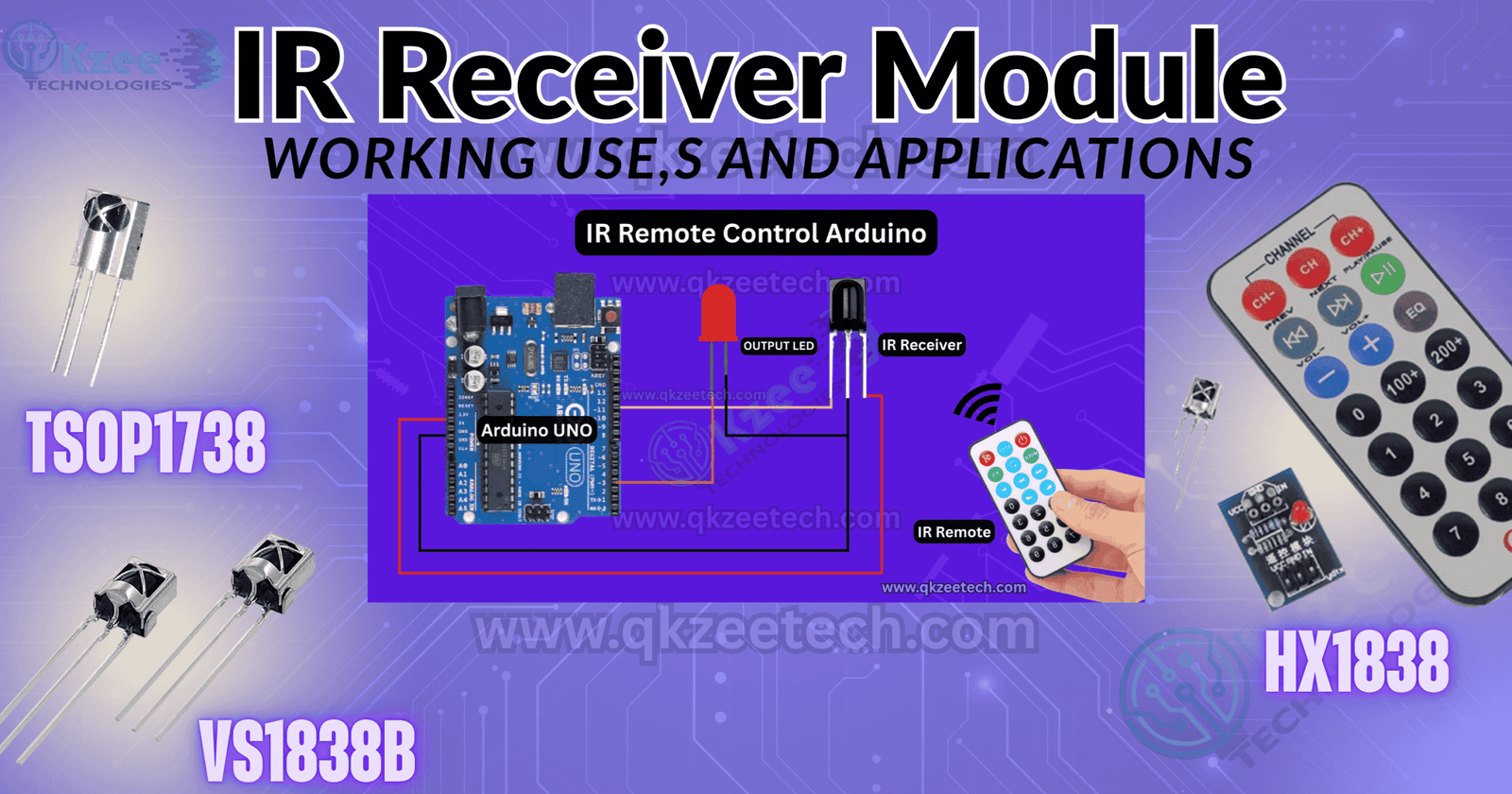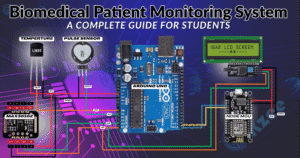How to Understand IR Receiver Module – Working and Applications
How to Understand IR Receiver Module – Working and Applications
Introduction – What Is an IR Receiver and Where It’s Used
An IR receiver module is a compact electronic device that detects infrared light signals. It’s widely used in electronics engineering projects, automation systems, and IoT applications. These modules are essential in remote control systems, sensor-based automation, and wireless data transmission.
In Lahore, students working on final year projects at QKZee Technologies and QKZ Tech use IR modules for building Arduino robots, smart home systems, and industrial projects. Located near Hall Road, the hub of Pakistan’s electronics market, QKZee provides best engineering services and high-quality electronics parts for students projects at the best price.
How It Works – Infrared Light Detection and Signal Decoding
The IR receiver module operates by detecting infrared light signals transmitted from an IR remote control or IR LED. These signals are invisible to the human eye but can be captured and converted into electrical pulses by the receiver.
When an IR transmitter sends a modulated signal, usually at 38 kHz, the receiver detects and filters it. It then decodes the data and sends a digital output to the microcontroller, like an Arduino or ESP32.
This simple yet powerful IR communication method enables devices to perform specific functions — such as turning on a TV, controlling a robot, or automating a system.
Types of IR Receiver Modules
Different IR receivers are used based on project requirements. The most common types include:
1. TSOP1738
The TSOP1738 is a highly sensitive and reliable IR receiver, ideal for Arduino projects and DIY systems. It operates at 38 kHz and provides noise-free digital output.
2. VS1838B
This model is compact and cost-effective. It’s commonly used in consumer electronics and school projects.
3. HX1838
Known for its compatibility with Arduino kits, it’s a great option for students projects near me who are just starting out in electronics engineering.
Applications – IR Receiver Module in Real-World Projects
IR receiver modules are essential in various fields, including robotics, industrial automation, and IoT. Let’s look at the most common applications:
1. Remote Control Systems
IR receivers are used in TV remotes, air conditioners, and Arduino-based control systems. When you press a button on a remote, the IR receiver module decodes the signal to execute the action.
2. Obstacle Detection in Robots
In Arduino robots, IR sensors detect obstacles and help avoid collisions. These DIY projects are popular among students at QKZee Technologies Lahore.
3. Wireless Communication
IR modules enable short-range wireless communication between two devices. This is perfect for university projects involving IR data transmission.
4. Industrial Automation
In industrial projects, IR sensors help monitor movement, detect objects, and enhance automation efficiency.
Arduino Example Project – IR Remote Control Setup
Let’s learn how to use an IR receiver module with Arduino to create a simple remote control project.
Required Components:
-
-
Arduino UNO
-
IR receiver (TSOP1738 or VS1838B)
-
IR remote control
-
Jumper wires
-
Breadboard
-
Circuit Connections:
-
-
Connect the OUT pin of the IR receiver to Arduino digital pin 11.
-
Connect VCC to 5V and GND to ground.
-
Upload the IRremote library code to read button signals.
-
When you press a button on the remote, the Arduino serial monitor displays a unique hexadecimal code. You can then program actions like turning ON/OFF an LED or controlling a robot motor.
This setup is one of the best engineering projects for beginners in Lahore and helps understand how to make and how to use IR communication effectively.
Troubleshooting Tips – Common Issues and Fixes
IR projects sometimes fail due to simple mistakes. Here’s how to fix them:
-
-
No signal detection? Check if the receiver faces the remote directly.
-
Random values? Reduce interference from sunlight or fluorescent lights.
-
No output? Ensure proper connection of VCC, GND, and OUT pins.
-
Weak response? Replace the remote batteries or use a new IR LED.
-
At QKZee Technologies Lahore, engineers help students troubleshoot such issues during final year project consultations.
Conclusion – Expanding IR-Based Projects
The IR receiver module is an incredible tool for students and engineers learning about IR communication and automation. It’s affordable, simple to use, and extremely versatile.
From Arduino projects to industrial automation, it powers countless innovations. Whether you’re at QKZee, Hall Road Lahore, or any electronics shop near me, you can find IR modules at the best price in Pakistan for your science and engineering projects.
For students in Lahore, working with Qasim Shahzad at QKZ Tech provides real-world exposure to IoT, Raspberry Pi, and sensor-based systems — a perfect start to mastering electronics engineering.
Where to Buy Your Electronics Components
Looking for affordable components for this Arduino project? Check out QKZee Technologies, an online shop in Lahore, Pakistan, offering the best components for students and DIY projects. Whether you’re looking for sensors, modules, or other electronics at a cheap price, they’ve got it all. Visit them at QKZeeTech.
1. What is the use of an IR receiver module?
It detects and decodes infrared signals for wireless communication and control.
2. Can I use an IR receiver with Arduino?
Yes, it works perfectly with Arduino using the IR remote library.
3. What are common IR receiver types?
TSOP1738, VS1838B, and HX1838 are widely used models.
4. Why is my IR sensor not working?
Check power connections and remove interference from sunlight.
5. Where can I buy IR modules in Lahore?
visit QKZee Technologies Hall Road Lahore, or contact QKZee Technologies for genuine parts and student-friendly prices,
You can buy them at QKZee Technologies, Hall Road Lahore, at the best price with complete project guidance.




